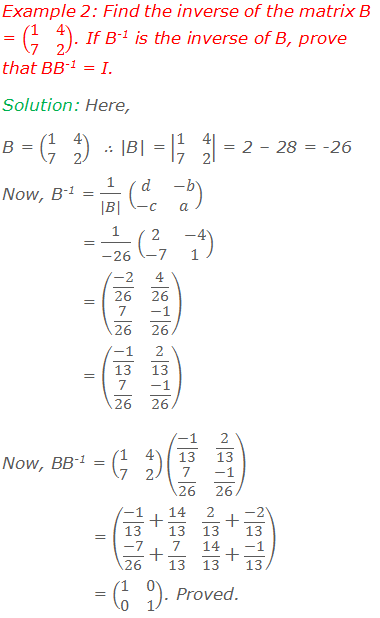
Inverse of a Matrix
If A is a
non-singular square matrix i.e. |A| ≠ 0, and there exists another square matrix
B such that AB = BA = I where I is an identity matrix of order same as that of
A or B, then the matrix B is said to be the inverse of matrix A and vice-versa. The inverse of A is denoted by
A-1. ∴ B = A-1.
********************
10 Math Problems officially announces the release of Quick Math Solver and 10 Math Problems, Apps on Google Play Store for students around the world.
********************
********************
Note: For the existence of the inverse of a matrix, the following requirements are necessary:
i) The matrix must be a square
matrix. This requirement is essential because, let A be a matrix of order 2×3
and B be another matrix of order 3×2, then AB and BA both exist but have
different orders, namely 2×2 and 3×3 and hence cannot be equal.
ii)
The equation AB = BA = I
(Identity Matrix) must be satisfied. For example, if

But, AB = BA ≠ I. So, they are not inverse matrix to each other.
iii) The matrix must be non-singular. i.e |A| ≠ 0.
Method of Finding an Inverse Matrix

Some Properties of Inverses
a. The inverse of the product of two non-singular matrices is equal to the product of their inverses taken in reverse order. i.e. If A and B are two non-singular matrices of same order then (AB)-1 = B-1A-1.

b. The transpose and inverse of a non-singular matrix is commutative. i.e. (A-1)t = (At)-1.

Worked Out Examples






0 comments: